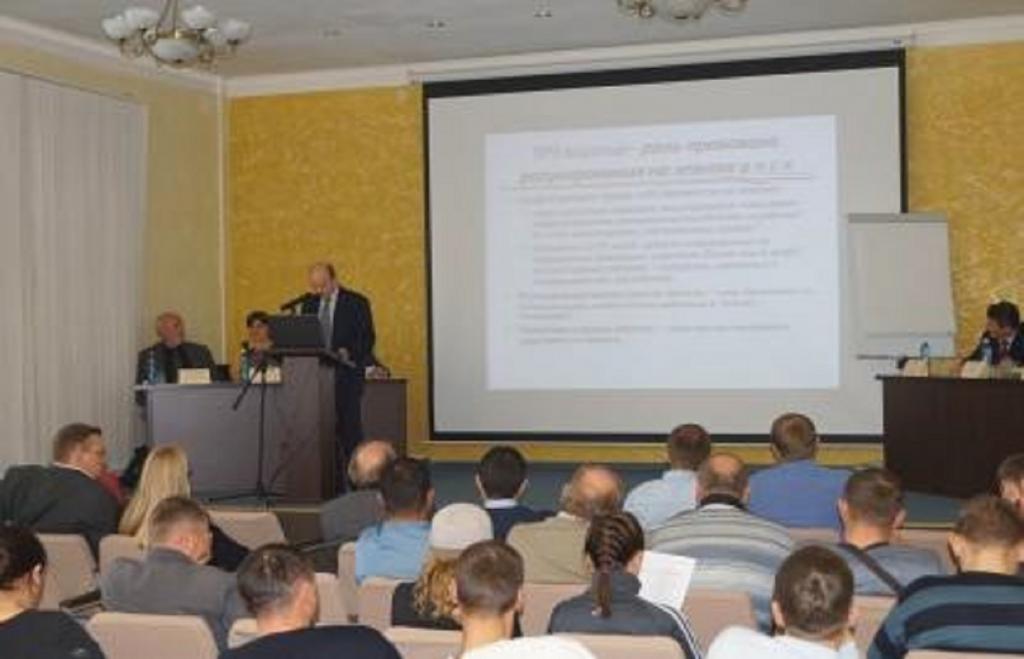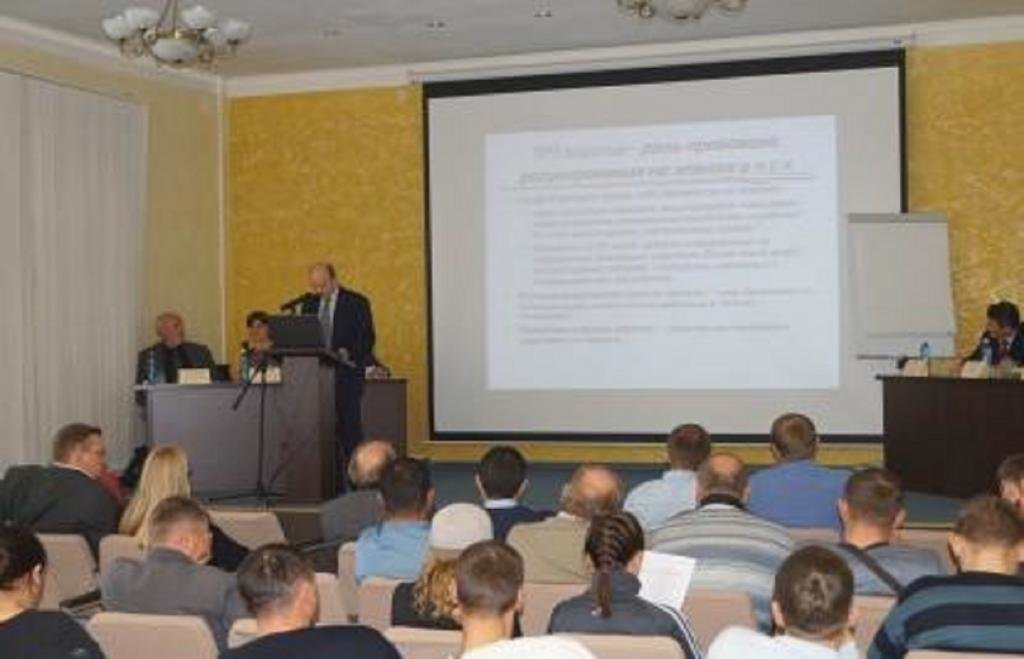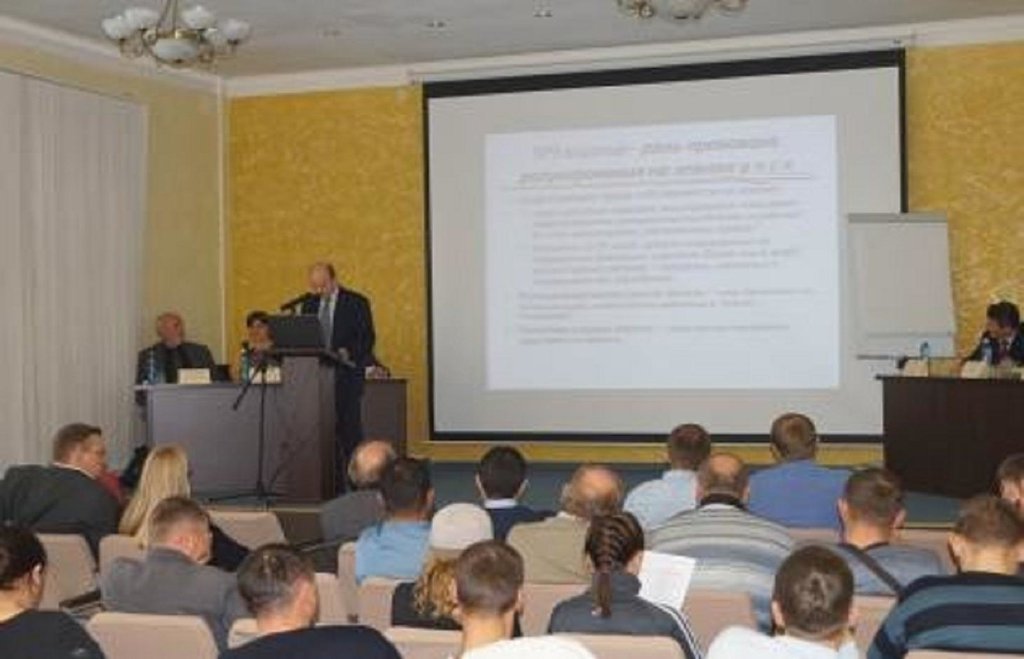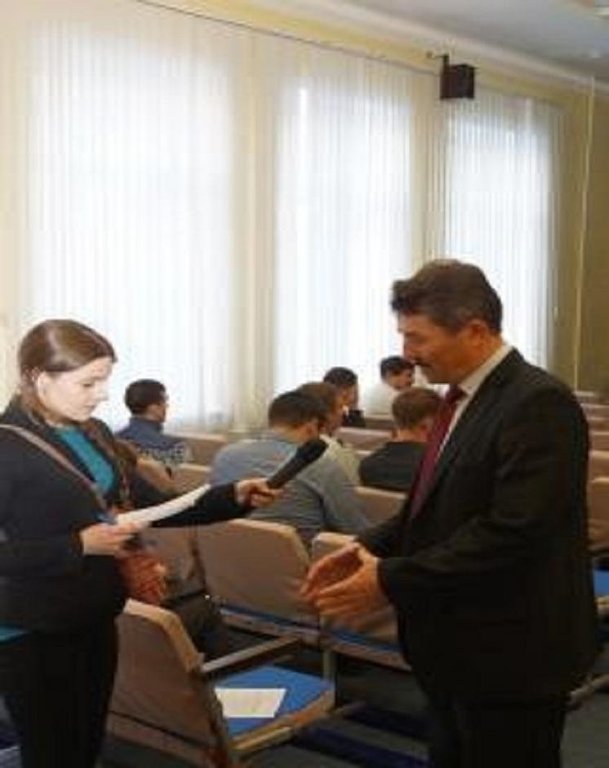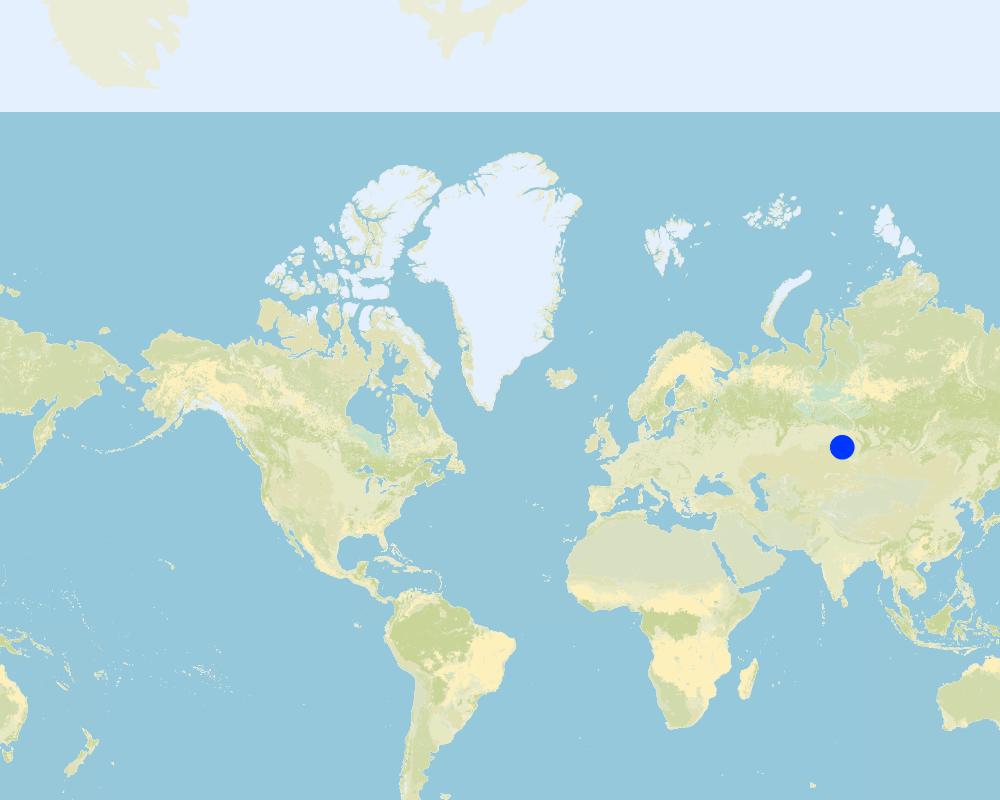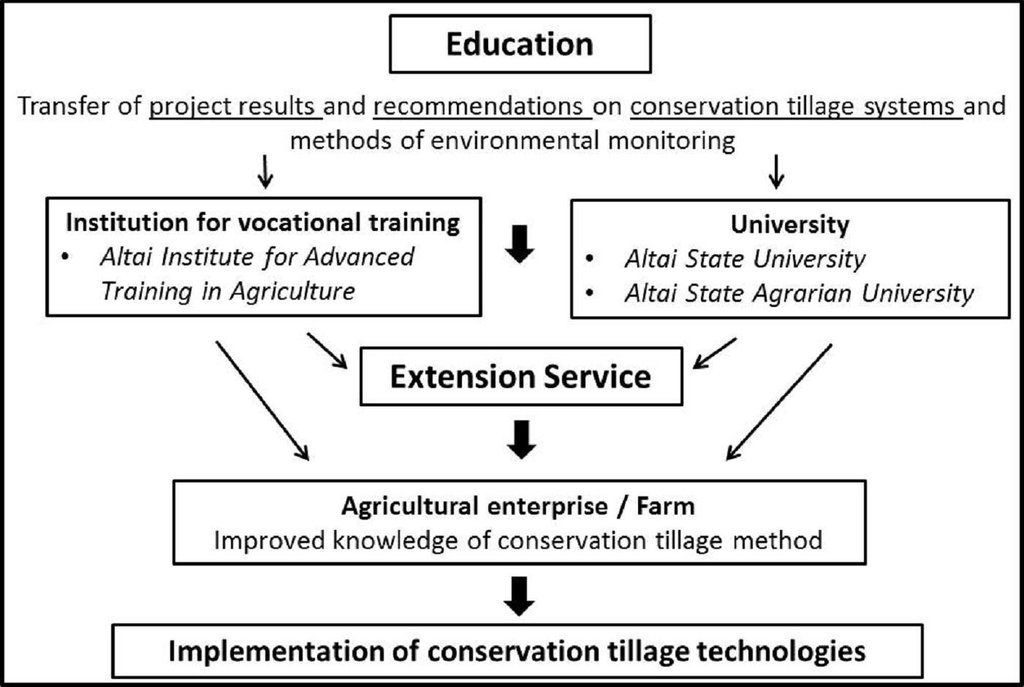Vocational Training [الاتحاد الروسي]
- تاريخ الإنشاء:
- تحديث:
- جامع المعلومات: Peter Liebelt
- المحرر: –
- المراجعون: David Streiff, Deborah Niggli
Профессиональное обучение
approaches_2544 - الاتحاد الروسي
عرض الأقسام
توسيع الكل طي الكل1. معلومات عامة
1.2 تفاصيل الاتصال بالأشخاص الرئيسيين لمصدر المعلومات والمؤسسات المعنية بتقييم وتوثيق النهج
متخصص في الإدارة المستدامة للأراضي:
Hiller Karsten
Martin-Luther University Halle-Wittenberg
متخصص في الإدارة المستدامة للأراضي:
Herzfeld Thomas
Martin-Luther University Halle-Wittenberg
متخصص في الإدارة المستدامة للأراضي:
Illiger Patrick
Martin-Luther University Halle-Wittenberg
متخصص في الإدارة المستدامة للأراضي:
Jelinek Ladislav
Martin-Luther University Halle-Wittenberg
متخصص في الإدارة المستدامة للأراضي:
Wust Andreas
Leibniz-Institut für Länderkunde, Leipzig
متخصص في الإدارة المستدامة للأراضي:
Kasarjyan Milada
Martin-Luther University Halle-Wittenberg
متخصص في الإدارة المستدامة للأراضي:
Bavorova Miroslava
Martin-Luther University Halle-Wittenberg
متخصص في الإدارة المستدامة للأراضي:
Imamverdiyev Nizami
Martin-Luther University Halle-Wittenberg
متخصص في الإدارة المستدامة للأراضي:
Kley Dorothee
Martin-Luther University Halle-Wittenberg
متخصص في الإدارة المستدامة للأراضي:
Frühauf Manfred
Martin-Luther University Halle-Wittenberg
متخصص في الإدارة المستدامة للأراضي:
Bondarovich Andreay
Altai State University
اسم المشروع الذي سهّل توثيق/تقييم النهج (إذا كان ذلك على صلة)
Sustainable land management in the Russian steppes (KULUNDA / GLUES)اسم المشروع الذي سهّل توثيق/تقييم النهج (إذا كان ذلك على صلة)
Book project: Making sense of research for sustainable land management (GLUES)اسم المؤسسة (المؤسسات) التي سهلت توثيق/تقييم النهج (إذا كان ذلك على صلة)
Martin-Luther-University Halle-Wittenberg (Martin-Luther-University Halle-Wittenberg) - ألمانيااسم المؤسسة (المؤسسات) التي سهلت توثيق/تقييم النهج (إذا كان ذلك على صلة)
Altai State University (ASU) - الاتحاد الروسياسم المؤسسة (المؤسسات) التي سهلت توثيق/تقييم النهج (إذا كان ذلك على صلة)
Leibniz Institute for Regional Geography (IfL) - ألمانيا1.3 الشروط المتعلقة باستخدام البيانات الموثقة من خلال WOCAT
متى تم تجميع البيانات (ميدانيا)؟:
26/07/2016
يوافق جامع المعلومات والشخص (لاشخاص) الرئيسي لمصدر المعلومات على الشروط المتعلقة باستخدام البيانات الموثقة من خلال WOCAT:
نعم
1.4 المراجع الخاصة باستبيان(استبيانات) تقنيات الإدارة المستدامة للأراضي
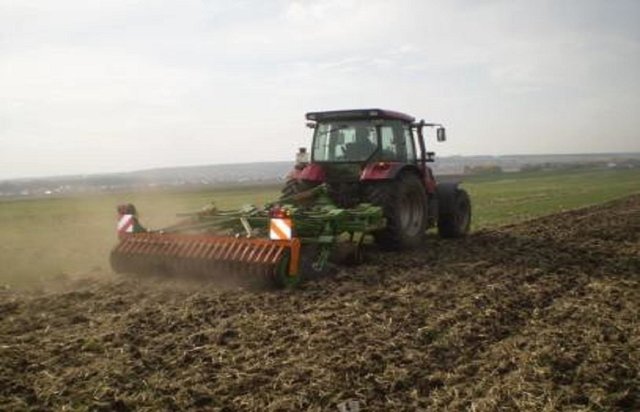
Minimum Tillage [الاتحاد الروسي]
Minimum tillage is a one-pass operation combined with sowing, using a classic Russian seeder modified for seedbed preparation and soil mixing. It can include shallow stubble cultivation after harvesting.
- جامع المعلومات: Peter Liebelt
2. وصف نهج الإدارة المستدامة للأراضي
2.1 وصف موجز للنهج
Regular in-service training of land use specialists and farm managers in the fields of sustainable land use management, and monitoring in the agrarian sector.
2.2 وصف تفصيلي للنهج
وصف تفصيلي للنهج:
Aims / objectives: By, as well as improved linkages of the agricultural consulting systems with universities and vocational training facilities,
Through targeted improved knowledge transfer, the Vocational Training Center is strengthening links between the agricultural consulting/ advisory systems, universities and vocational training facilities. The aim is to enhance capacity building and knowledge transfer for a better consultation / advisory system, especially. This concerns alternative conservation measures and SLM in rural areas. The centre and members of the different sub-projects of the KULUNDA project gave lectures covering up-to-date research results and on various topics, including SLM technologies (no-till and minimum tillage). Socio-economic and ecological impact was covered, as well as environmental monitoring. This took place at the ‘Barnaul Institute for Qualification in Agriculture’. These lectures are embedded into an existing training programme for young professionals within the agronomic service and extension service/ advisory service as well as heads of agricultural enterprises.
Through the targeted improved knowledge transfer between the agricultural consulting/ advisory systems, universities and vocational training facilities we want to strengthen the implementation of conservative conservation technologies in agricultural practice.
Methods: It is also planned to present project results on the topic of sustainable land management in the State Agrarian University in Barnaul, which is the main training centre for future agronomists. This presentation takes different forms – for example through poster presentations or conferences. The implementation courses material/ modules are partially running (for lectures at the Barnaul Institute for Qualification in Agriculture) or are under preparation. Furthermore, there is a plan to cooperate with the Altai State University to organise a seminar on the topic entitled “Laboratory analysis to investigate soil conditions”. Thus it helps to implement new methods of environmental monitoring into the current teaching program.
Stages of implementation: More recently, the project’s partner, the German company Amazone, has started an initiative of vocational training for young people in the region: these students are being given the opportunity to enhance their knowledge at the company’s production site in Samara and to learn about technical aspects of the two SLM technologies, namely no-till and minimum till.
Role of stakeholders: The measures are aimed at different stakeholder groups within the Altai Krai identified in the AKIS-Network (Agricultural Knowledge and Information System). The greatest importance is attached to the stakeholders of extension service and agricultural producers/ heads of agricultural enterprises because of the high level of dependency on the successful implementation of the SLM technologies on their knowledge and support. The managers who participated in advanced trainings are mainly from economically strong agricultural enterprises.
2.3 صور عن النهج
2.5 البلد/المنطقة/المواقع التي تم تطبيق النهج فيها
البلد:
الاتحاد الروسي
المنطقة/الولاية/المحافظة:
Altai Krai
مزيد من التفاصيل حول الموقع:
Mikhaylovski district
التعليقات:
Area of the field test
Map
×2.6 تواريخ بدء وإنهاء تنفيذ النهج
أشر إلى سنة البدء:
2013
سنة الإنهاء (إذا لم يعد النهج مطبقًا):
2016
2.7 نوع النهج
- تقليدي/أصلي
2.8 الغايات/الأهداف الرئيسية للنهج
The Approach focused mainly on SLM with other activities (Knowledge transfer and capacity building not only in the field of soil conservation but also in the resulting socioeconomic and environmental effects and ways to improve regional development in rural areas.)
Improvement of technology adoption through: Capacity building, training and knowledge transfer. Awareness raising.
The SLM Approach addressed the following problems: There is a lack of knowledge on current scientific findings regarding innovative agronomic methods like minimum and no-till and a lack of awareness concerning the importance of the conservation technologies for economic and ecological sustainable farming strategies. A big problem is that the system for advising farmers is not sufficient, although there is a state institution for this purpose. There is a lack of awareness about the importance of vocational training, and lack of international, scientifically-based expertise in the regional institution conducting vocational training.
2.9 الظروف التي تمكن أو تعيق تنفيذ التقنية/التقنيات المطبقة بموجب النهج
المعايير والقيم الاجتماعية /الثقافية/ الدينية
- معيق
Insufficient acceptance by land users of new and externally developed methods. Historically-caused low levels of trust among farmers/ land users that, amongst others, limits the transfer of ‘good farming practices’.
Treatment through the SLM Approach: Awareness raising, training and knowledge sharing for environmental problems due to non-adapted farming systems.
Specifically targeted policies (e.g. provision of grants or credit for the establishment of producer groups) and awareness raising.
توفر/الوصول إلى الموارد والخدمات المالية
- معيق
High cost of new minimum and no-till machinery and difficult access to credits. Budget limitations are proportionately greater with smaller farms (highly variable yields reduce farm profitability, limited access to external funds)
Treatment through the SLM Approach: In the training modules specialists were trained on how to improve the profitability, to work economically and rationally by implementing alternative conservation measures and SLM as well as by efficient personnel management in the agricultural enterprises.
الإطار المؤسساتي
- معيق
Unfavourable framework conditions and low capacity of the administration to monitor the state of land and to enforce the soil protection law which would oblige land users to adopt conservation measures.
Treatment through the SLM Approach: The approach did not address this factor.
الإطار القانوني (حيازة الأراضي، وحقوق استخدام الأراضي والمياه)
- معيق
Unclear land use rights. High share of rented land. Missing incentives to stimulate land users to adopt conservation practices. Secure land use rights motivates to more conscious care for the land and stimulates farmers to adopt better practices.
Treatment through the SLM Approach: Discussion of the options to strengthen the role of ‘State Redistribution of Funding’ in favour of funding land protection.
The existing land ownership, land use rights / water rights moderately hindered the approach implementation Our findings support the evidence that land ownership is rather a hindering factor for the farmers. It has several reasons. There are still some legislative and administrative weaknesses that limit the full execution of the ownership rights (non-defined borders, lacking cadastral registration of some plots, missing owners, etc.). When farmers face such difficulties, they are less willing to invest in the own land. Furthermore, around half of the land utilised in Altai krai is owned by the state (of that around 2 mil. hectares are administered by the Redistribution Fund). The conditions under which the land is provided do not require the farmers to adopt more sustainable land practices. As above mentioned, this would call for the strengthening of the land allocation criteria. Another aspect to be considered is the capacity of the state monitoring agency (State Veterinary and Phytosanitary Controls) and if it would be capable to control the compliance of the rules provided the land use conditions are stricter.
المعرفة حول الإدارة المستدامة للأراضي، والوصول إلى الدعم الفني
- معيق
In Russia conventional/ traditional cultivation still prevails, although market for no-till technologies is fully developed and functional. Various machinery companies either have branches or production units in Russia.
Treatment through the SLM Approach:
3. المشاركة وأدوار الأطراف المعنية
3.1 أصحاب المصلحة المعنيون بالنهج وأدوارهم
- مستخدمو الأراضي المحليون/المجتمعات المحلية
Farmers of the investigation area in the district Altai Krai
There are more men working in the area of crop production as women. More men participated
- متخصصون في الإدارة المستدامة للأراضي / مستشارون زراعيون
Advisers in the field of cropping systems
- الحكومة الوطنية (المخططون، صانعو القرار)
Ministry of Agriculture
- Staff member of the project
German and Russian scientists of the project
3.2 انخراط مستخدمي الأراضي المحليين/المجتمعات المحلية في المراحل المختلفة للنهج
| انخراط مستخدمي الأراضي المحليين/المجتمعات المحلية | حدد من شارك وصف الأنشطة | |
|---|---|---|
| المبادرة/التحفيز | تفاعلي | The embedded training measures modules are embedded in the already existing training program of vocational training centre in Barnaul. At the last seminar land users and specialists were the target audience. Interactive lectures (teaching modules) were held. The participants of the seminar were actively involved by asking questions as well as by intensive discussions. |
| التخطيط | غير موجود | The planning of the approach was first of all project-internal in consultation with the head of the regional vocational training institute in Barnaul. |
| التنفيذ | تفاعلي | Interactive lectures to agricultural consultants/ extension agents/ advisory services and farmers on latest findings and recommendations of the KULUNDA project. Following the lectures the participants could ask questions and discuss the various research results presented. In addition, brochures and USB-sticks containing project results and lectures were distributed. |
| الرصد/التقييم | تفاعلي | Evaluation after the event through project intern discussions as well as interviews with regional stakeholder |
| Research | غير موجود | The vocational training is mainly intended to inform the audience (target groups) about the scientific results and their application-specific relevance by the scientific project staff. The audience is not involved in research work. |
3.3 مخطط التدفق (إذا كان متاحًا)
الوصف:
The chart is intended to show the importance of the vocational training by the 'Institute for advanced training in agriculture' concerning knowledge transfer and capacity building. Knowledge transfer takes place either directly or indirectly through the advisory service to the farmers. Due to the capacity building measures and resulting better knowledge of the farmers about conservation technologies this approach will better enable them to implement conservation technologies.
المؤلف:
Peter Liebelt
3.4 اتخاذ القرار بشأن اختيار تقنية/تقنيات الإدارة المستدامة للأراضي
حدد من الذي قرر اختيار التقنية/التقنيات التي سيتم تنفيذها:
- متخصصون في الإدارة المستدامة للأراضي بشكل أساسي، بعد التشاور مع مستخدمي الأراضي
اشرح:
The SLM specialists of the the KULUNDA project mainly make the decisions on the choice of the SLM technology in cooperation with the farmers.
Decisions on the method of implementing the SLM Technology were made by Project staff. At the beginning of the project a large interview campaign with relevant local stakeholders was conducted by the scientists of the KULUNDA-project. Based on the survey results, a decision on the implementation measures were made by the scientific staff on the German and Russian site with consultation with local stakeholder groups.
4. الدعم الفني وبناء القدرات وإدارة المعرفة
4.1 بناء القدرات/التدريب
هل تم تقديم التدريب لمستخدمي الأراضي / الأطراف المعنيين الآخرين؟:
نعم
حدد من تم تدريبه:
- مستخدمو الأراضي
- موظفون ميدانيون/ مستشارون
شكل التدريب:
- دورات
المواضيع المغطاة:
Competitiveness of agricultural enterprises, ecologically and economically effective farm management through the use of resource-conserving crop production, costs for introducing modern tillage systems, personnel management, monitoring systems
4.2 خدمة استشارية
هل يملك مستخدمو الأراضي وصولا إلى خدمة استشارية؟:
نعم
حدد ما إذا كانت الخدمة الاستشارية متوفرة:
- في مراكز دائمة
وصف/تعليقات:
Name of method used for advisory service: Vocational training for land use specialists / advisers and land user; Key elements: Knowledge / exchange, Capacity building, Training of trainers
There is already mainly a governmental advisory structure. The consultants are able to make recommendations for soil conserving technologies. However, we have observed a missing international expertise and demand of consultation for the farmers.
4.3 تعزيز المؤسسات (التطوير التنظيمي)
هل تم إنشاء أو تعزيز مؤسسات من خلال هذا النهج؟:
- لا
4.4 الرصد والتقييم
هل يشكل الرصد والتقييم جزءا من النهج؟:
نعم
التعليقات:
Technical aspects were ad hoc monitored by project staff, government, land users through observations; indicators: information and discussion on the technical obervation results relating conservation technologies by the target groups
Technical aspects were ad hoc monitored by project staff, government, land users through measurements; indicators: information and discussion on the technical measurement results relating conservation technologies by the target groups
Economic / production aspects were ad hoc monitored by project staff, government, land users through observations; indicators: information and discussion on the economic obervation results relating economic parametres (margin profit and others) by the target groups
Economic / production aspects were None monitored by project staff, government, land users through measurements; indicators: information and discussion on the technical measurement results relating conservation technologies by the target groups
Management of Approach aspects were None monitored by None through observations; indicators: information and discussion on the management obervation results relating the approach by the target groups
There were no changes in the Approach as a result of monitoring and evaluation
There were no changes in the Technology as a result of monitoring and evaluation
4.5 البحوث
هل كانت البحوث جزءًا من النهج؟:
كلا
5. التمويل والدعم المادي الخارجي
5.1 الميزانية السنوية لمكون الإدارة المستدامة للأراضي في النهج المذكور
إذا لم تكن الميزانية السنوية الدقيقة معروفة، قم بالإشارة إلى نطاقها:
- 10,0000-2,000
التعليقات (على سبيل المثال المصادر الرئيسية للتمويل/الجهات المانحة الرئيسية):
Approach costs were met by the following donors: international (German Ministry of Education and Research, BMBF): 100.0%
5.2 الدعم المالي/المادي المقدم لمستخدمي الأراضي
هل حصل مستخدمو الأراضي على دعم مالي/ مادي لتنفيذ التقنية/ التقنيات؟:
نعم
إذا كانت الإجابة بنعم، حدد نوع (أنواع) الدعم والشروط والمزودين:
The Altai Institute for Advanced Training in Agriculture that is publicly founded provided personnel staff, an auditorium and hast made the promotion for the event.
5.3 إعانات لمدخلات محددة (بما في ذلك العمالة)
- غير ذلك
| غير ذلك(حدد) | إلى أي مدى | حدد الإعانات |
|---|---|---|
| preparation of training material | ممول بالكامل |
التعليقات:
The approach of vocational training was only to inform the land users without financial inputs in equipment and others.
5.4 الائتمان
هل تم توفير ائتمان في إطار نهج أنشطة الإدارة المستدامة للأراضي؟:
كلا
6. تحليل الأثر والتصريحات الختامية
6.1 آثار النهج
هل ساعد النهج مستخدمي الأراضي على تنفيذ وصيانة تقنيات الإدارة المستدامة للأراضي؟:
- لا
- نعم، قليلا
- نعم، باعتدال
- نعم، إلى حد كبير
The approach vocational training helps to improve the quality of advisory service and to inform directly the land user. It have been shown that the vocational training (Institute for Advanced Training in Agriculture) is a suitable way for knowledge transfer. The higher knowledge of the land user and land use specialists / advisers help to implement new conservation technologies. Vocational training of course is not a new invention but the aim of the project initiated learning modules was to present information that are up-to-date and on in the field of con
هل ساهم النهج في تمكين الفئات المحرومة اجتماعيا واقتصاديا؟:
- لا
- نعم، قليلا
- نعم، باعتدال
- نعم، إلى حد كبير
The implementation of the technology is not primarily aimed at these issues.
هل أدى النهج إلى تحسن في مسائل حيازة الأراضي / حقوق المستخدمين التي أعاقت تنفيذ تقنيات الإدارة المستدامة للأراضي؟:
- لا
- نعم، قليلا
- نعم، باعتدال
- نعم، إلى حد كبير
The problem is unlikely to be overcome in the near future.
Did other land users / projects adopt the Approach?
- لا
- نعم، قليلا
- نعم، باعتدال
- نعم، إلى حد كبير
Did the Approach lead to improved livelihoods / human well-being?
- لا
- نعم، قليلا
- نعم، باعتدال
- نعم، إلى حد كبير
By implementing the new conservation technologies the sustainability of farming systems in both the ecological and the economic sense increases. therefor the technologies are able to improve human well-being especially in rural areas where agriculture has a great importance for livelihood and human well-being. The technologies help to protect soil as production base for farming. Whether the population participate on the increase of profit depends on the management of farm enterprises that decide on further investments for instance in salary or social projects.
Did the Approach help to alleviate poverty?
- لا
- نعم، قليلا
- نعم، باعتدال
- نعم، إلى حد كبير
The implementation of the technologies min till and no till protect the soil as an important living and economic basis
6.2 المحفز الرئيسي لقيام مستخدمي الأراضي بتنفيذ الإدارة المستدامة للأراضي
- زيادة الإنتاج
To minimize fluctuations in yield and to secure yield through a higher sustainability
- زيادة الربح (القدرة)، وتحسين نسبة التكلفة إلى العائد
- انخفاض عبء العمل
The reduction of workload is important especialy in terms of the large farm sizes.
- المدفوعات/ الإعانات
- الانتماء إلى حركة/ مشروع/ مجموعة/ شبكات
Affiliation with the KULUNDA project
6.3 استدامة أنشطة النهج
هل يمكن لمستخدمي الأراضي المحافظة على استدامة ما تم تنفيذه من خلال النهج (بدون دعم خارجي)؟:
- نعم
إذا كانت الإجابة بنعم، صف كيف:
The Altai Institute of vocational training can continue with the help of learning modules and various information materials that we prepared as implementation products under the project.
6.4 نقاط قوة/مزايا النهج
| نقاط القوة/ المزايا/ الفرص من وجهة نظر مستخدمي الأراضي |
|---|
| To have a platform for discussion and knowledge exchange with different national stakeholder groups as well as international scientists (How to sustain/ enhance this strength: Regular meetings for knowledge exchange.) |
| To get information about the latest international ‘trends’ in agriculture that aim at economically effective, resource-saving and environment-friendly cropping management (How to sustain/ enhance this strength: Regular presentation of innovations and new results that are up to date and on international high level.) |
| نقاط القوة/ المزايا/ الفرص من وجهة نظر جامع المعلومات أو غيره من الاشخاص الرئيسيين لمصدر المعلومات |
|---|
| Capacity building (How to sustain/ enhance this strength: Through better linkage between the actors of different stakeholder groups (see point 1) and by regular teaching and consultation) |
| Better knowledge transfer (How to sustain/ enhance this strength: By presenting practice-oriented project findings, which show the current state of research.) |
|
Improved linkage between different stakeholder groups like specialists, advisers and farmers/ land users (How to sustain/ enhance this strength: By regular joint vocational workshops and seminars on education, research, consulting, needs of end users with actors of the Agricultural Knowledge and Information System network in the Altai region. For the realization of this purpose the regional “Altai Vocational Training Centre in Barnaul was and can be used as a platform. ) |
| Better consultation of land users and specialists (How to sustain/ enhance this strength: By presenting use-oriented project findings, which present the current state of research as well as discussions about the presented issues.) |
6.5 نقاط الضعف/ العيوب في المنهج وطرق التغلب عليها
| نقاط الضعف/ المساوىء/ المخاطر من وجهة نظر مستخدم الأراضي | كيف يمكن التغلب عليها؟ |
|---|---|
| For land user it takes a lot of effort like high costs and time to visit the event in the capital Barnaul. |
| نقاط الضعف/ المساوىء/ المخاطر من وجهة نظر جامع المعلومات أو غيره من الاشخاص الرئيسيين لمصدر المعلومات | كيف يمكن التغلب عليها؟ |
|---|---|
| In contrast to the field seminar the vocational training is more theoretical, which is less attractive for farmers | Combination of different implementation measures like vocational training for the theoretical background and the field seminar to show the opportunities of technology implementation in practice. |
7. المراجع والروابط
7.1 طرق جمع/مصادر المعلومات
- زيارات ميدانية، مسوحات ميدانية
- مقابلات مع مستخدمي الأراضي
الروابط والوحدات المواضيعية
توسيع الكل طي الكلالروابط

Minimum Tillage [الاتحاد الروسي]
Minimum tillage is a one-pass operation combined with sowing, using a classic Russian seeder modified for seedbed preparation and soil mixing. It can include shallow stubble cultivation after harvesting.
- جامع المعلومات: Peter Liebelt
الوحدات المواضيعية
لا يوجد وحدات مواضيعية


